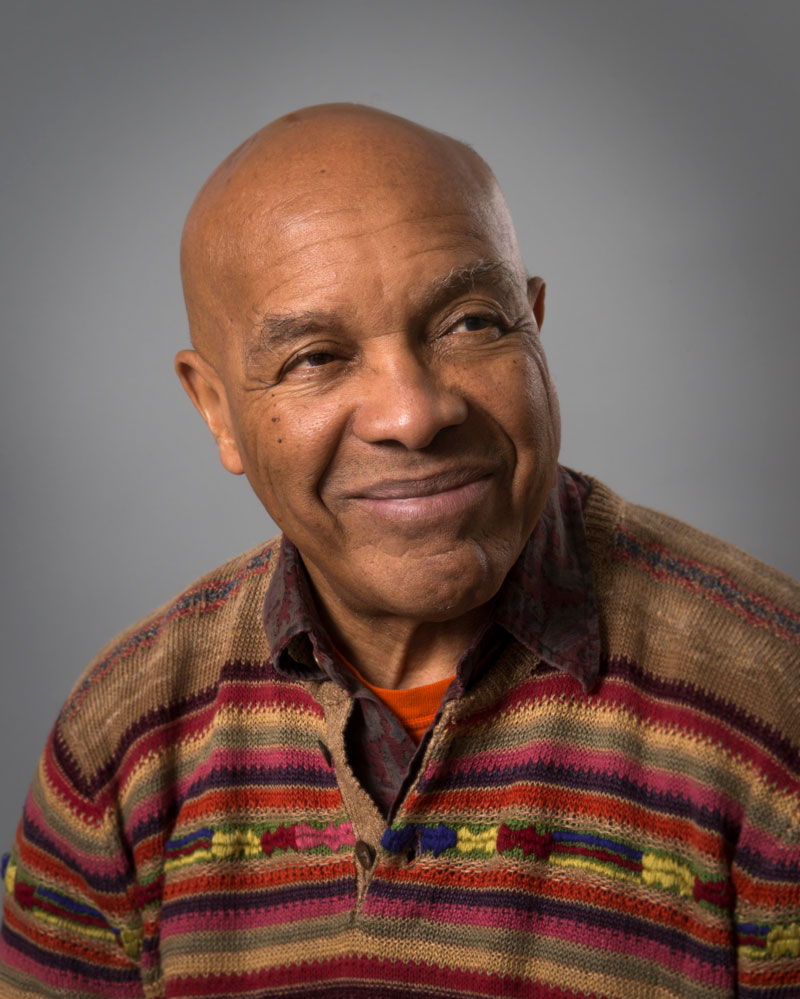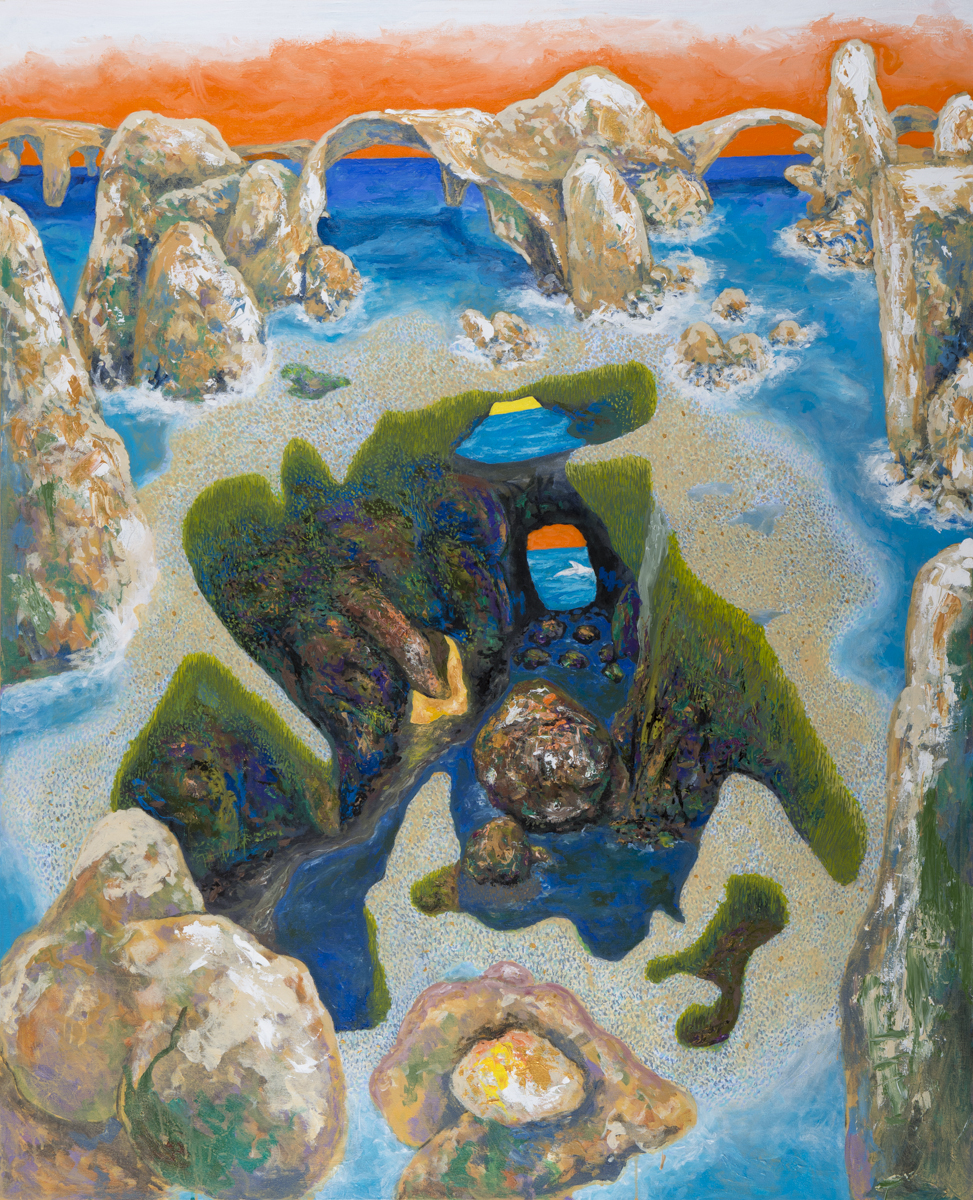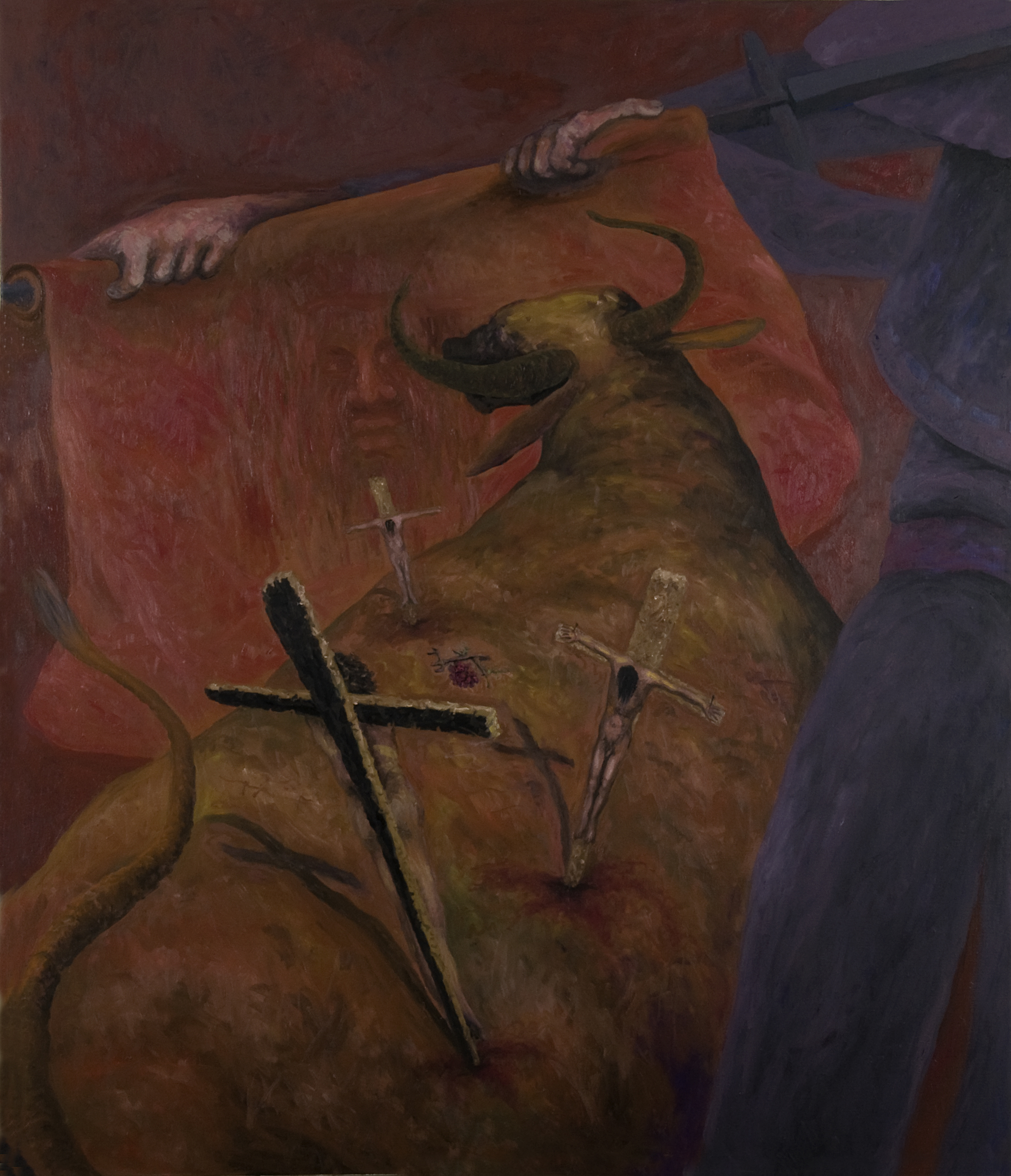About Keith Morrison


Keith Anthony Morrison is a painter, printmaker, educator, art critic, art curator and university administrator. He represented the USA as art critic and cultural envoy to the 2008 Shanghai Biennale. He represented Jamaica in the 2001, Venice Biennale, the world’s most famous and prestigious art exhibition, the only time Jamaica has been represented there. He represented Jamaica in the Caribbean Biennale in Santo Domingo, in 1994. He curated the exhibition, Magical Visions, with work of eight major contemporary African-American artists in 2009. He curated the art exhibition, Ceremony in Space and Time and Sound, an exhibition of 14 Jamaican artists living in Jamaica and abroad, for the National Art of Jamaica, in Kingston in 2008. He is the subject of the biography, Keith Morrison, by Dr. Rene Ater, 2004; His paintings form the foundation for an anthology by scholars from the Caribbean, Latin American, US, and the UK, titled, African Diaspora in the Cultures of Latin America, the Caribbean and the United States, 2014. His painting is the iconic image on the cover of the book, Senghorian Meditations: The Onthology of Afro-Diasporic Aesthetics, by Professor Marc Mae Bekele, to be published by L’Harmattan Press, Paris, France, March 2015. Morrison has exhibited worldwide, including in the Venice Biennale, the Museum of Modern Monterrey, Mexico, the Art Institute of Chicago, the Smithsonian Institution and the deYoung Museum, the Philadelphia Museum of Art, the Smithsonian Institution, and exhibitions in countries such as the UK, Germany, France, Italy, Yugoslavia, Poland, Egypt, Lebanon, Liberia, Japan, Brazil, Cuba, India, and China. In the USA he has had solo exhibitions in cities such as New York, Washington, Chicago, Philadelphia, San Francisco, and Boston. Morrison has had a distinguished career as an art critic, having published in many books, periodicals, newspapers, and museum catalogues. He is also an international art curator. He is author of the book, Art in Washington and Its African-American Presence, 1940 to 1970. His essay, “Art Criticism: a Pan-African Point of View,” is widely considered a seminal contribution to the field (see: New Art Examiner, 1979, reprinted in The Essential New Art Examiner, 2013). Morrison has curated art exhibitions in Cuba, the USA and Jamaica. He was Fulbright Senior Scholar to China in 2009. Keith Morrison was the first African-American to be appointed academic dean of art in a predominantly white American university, a position he has been appointed to 5 times in different institutions. Morrison served as Dean of Tyler School of Art; Temple University, Philadelphia; Dean for the College of Creative Arts, San Francisco State University; Dean for Academic Affairs, San Francisco Art Institute, and Dean for the College of Arts and Humanities at the University of Maryland, College Park, where he was previously Professor and Chair of the Art Department. He was a Distinguished Visiting Artist/Scholar at the University of Michigan, Ann Arbor. Previously he was Associate Dean and Associate Professor, University of Illinois, Chicago; Art Department Chair, DePaul University; and Assistant Professor of Art at Fisk University. More information may be found elsewhere on the web, including museum and university websites.
The Artist Morrison has exhibited his paintings and prints across the U.S. and abroad, and was selected to represent Jamaica at the 2001 Venice Biennale. His works are included in numerous private and public collections, including those of the Cincinnati Art Museum; the Art Institute of Chicago; the Pennsylvania Academy of the Fine Arts; the Corcoran Gallery of Art; the Smithsonian Museum of American Art; the Museum of Modern Art, Monterrey, Mexico; the Philadelphia Museum of Art; and the National Gallery of Art, Jamaica. He has had solo exhibitions in galleries in New York, Chicago, Boston, Washington and San Francisco; and in such museums as the de Young Museum, San Francisco; the University of Delaware Museums; and the Alternative Museum, NYC. His work has been included in hundreds of group shows worldwide, including US exhibitions at the Philadelphia Museum of Art; the Smithsonian Museum of American Art; the Newark Art Museum; the Bronx Museum; the Wadsworth Athenaeum; the Museum of Contemporary Art, Chicago; the Corcoran Gallery of Art; the High Museum; and the Butler Institute of American Art. Keith Morrison received the 2023 Porter Colloquium Life Time Achievement Award from Howard University, the National Gallery of Art, and the University of Maryland, College Park.



Keith Anthony Morrison, Author, Art Critic, and Curator
As art critic, Morrison has contributed to numerous publications, including American Visions, the Washington Post, and the Smithsonian Institution Press, and was a guest editor for the New Art Examiner, for which he wrote many articles. He has written catalog essays for such institutions as the Baltimore Museum of Art; the Corcoran Gallery of Art; the de Young Museum; the Getty Museum; the Alternative Museum, Pomegranate Press, the University of Delaware, the University of Maryland, San Francisco State University and the National Gallery of Art of Jamaica. He wrote the book, Art in Washington and Its Afro-American Presence: 1940-1970. He has lectured internationally. Morrison has also had a notable career as a curator, having organized many exhibitions in the US and abroad, and wrote the catalogue essays for many of them.
Keith Anthony Morrison, Art Consultant
Morrison was art consultant for the city of New York and for many state arts agencies. He was the US West Coast representative for Ludwig Foundation of havana, Cuba. He was for several years a TV review for “Around Town” in Washington D.C. and the mid-Atlantic. His art and life is featured in films. His paintings have appeared on the covers of magazines and books in the US and Europe. He has been written about in many art publications, magazines and newspapers in the US and abroad.
Keith Anthony Morrison, Educator
Morrison, the first African-American dean appointed in a non-HBC institution, held five deanships from 1993 to 2008, including at the San Francisco Art Institute; the College of Arts and Humanities, University of Maryland, College Park; the College of Creative Arts, San Francisco State University (twice); and the Tyler School of Art, Temple University. As dean over a nearly 20-year period he appointed more than 100 faculty members; developed several degree programs; created exhibitions and festivals in art, dance, film, music and theatre; raised major funding; and led several academic programs to national and international distinction. He is at present Professor of Art, Tyler School of Art, Temple University.
Honors
Keith Morrison represented the USA as art critic and cultural envoy to the Shanghai Biennale in 2008. He was named a Fulbright Senior Scholar in 2008. He represented Jamaica in the 2001 Venice Biennale. He represented Jamaica in the 1996 Santo Domingo Biennale. He was named “Caribbean in the [San Francisco] Bay,” 1994. He has received awards from the Ford Foundation and the Danforth Foundation; the Bi-Centennial Award for Painting, from the City of Chicago; the Organization of African Unity Award for Painting; the National Foundation of Art Educators Award; a Fulbright Senior Fellowship and a Lifetime Achievement Award: Porter Colloquium, Howard University, and The National Gallery of Art. A book about his life, titled Keith Morrison, by art historian René Ater, was published by Pomegranate Press in 2005. Morrison was awarded the title Commander in the Order of Distinction by his native country of Jamaica.
Testimonials
Many painters attempt the sort of free association Morrison practices, but of all modes of pictorial expression it may be the most difficult to sustain.
Our everyday personal conduct rests on overestimation of the value and effectiveness of conscious control. Freud suggested that dreaming, not wakeful self-consciousness is the true model of mental life. And in Morrison’s best paintings we meet a similar notion, with the critical difference that Morrison performs his theory athletically.
Morrison’s idea of cultural exchange, however, is not to be found in strictly literal and superficial clichés. As Tombstones, 1991, makes plainly evident. His investigations of culture are more deeply philosophical. Suggesting a modern-day Demoiselles d’Avignon, in which Picasso’s nude women are transformed as black men, Tombstones is an allegory of sorts about drug use. Spread across the shallow space of the picture, four men do a deadly dance around a sinister central figure who points a gun at the viewer his next victim. Huge tennis shoes line the edge of the picture and vertical tombstones/tenement houses mark foreground and background. Seen against an intense orange sky, these vertical slabs suggest the gaping jaws of a monster.
The idea for the composition, according to Morrison, came from Peter Sellars’ version of Mozart’s opera Don Giovanni, entitled Mozart-Da Ponte Cycle, 1989, a production set in the shells of empty Bronx buildings in which Mozart’s feast becomes a cocaine-shooting party. What Morrison has done is to extract from Mozart’s 18th-century opera the universal themes of lust and morality, freedom and addiction, life and death. His figures, while contemporary, participate in a drama that is not ununique to any specific culture or time. Like Mozart, Morrison presents a dilemma of human beings at the brink of the abyss, about to be devoured by their own frailties and vices.
Those oracular dentures in his work symbolize the oral force behind all of Morrison’s oil-on-canvas paintings. First as a colorist and now as a visual griot, Keith Morrison explicates black reality through the medium of painting with a solid understanding of its implicit rhythms and odd turns of irony. Like the fable of the trickster/spider Anansi, which traveled with Gold Coast Africans during slavery to the New World, Keith Morrison’s painted tales weave a web of human exploits, bestial behavior, and spiritual judgment and retribution.
Apart from his skillful use of colour, what sets Morrison’s art apart is the consummate skill with which he manages to conflate religious and secular, real and imaginary, or the triumphant and the trivial. Several genres of art flow seamlessly through his work, although it is possible to trace some evolution from his more abstract early art in the 1970s to a complex figurative contemporary design that his biographer, Renée Ater, calls “a painterly storyteller
Much of his Jamaican childhood and his later global wanderings permeate his art. The exposition in Delaware has a lovely panoramic view highly reminiscent of Port Antonio harbour and Navy Island. It also has a market presentation that could be a Linstead market scene. Morrison admits that the port scene is a stylised memory of his first visit by train to Port Antonio at the age of nine which he then thought to be the most beautiful view he had ever seen. Many years later he painted the scene from memory.
There is also a delightfully intricate watercolour composition called African Tango, and an extremely interesting bullfighting painting. This representation is quite unlike the famous painting of Manet with its large cast of characters around a stricken bull in the bullring. In Morrison’s painting the bull is the overwhelming central feature. From afar, the composition seems to be a simple but dramatic bullfight poster. Closer, however, the picture overflows with symbolism. The bull is attacking a bloody cape and only the hands of the matador are apparent. The three-coloured, barbed banderillas oddly placed in the oversized back of the bull are really crosses bearing individuals, presumably a scene of the crucifixion of Christ.
Although much of Morrison’s art is autobiographical, it includes astute political commentary and reflections on his travels, his observations, his reading and musical tastes. One of his paintings is called Wide Sargasso Sea. Religion, magic, rituals, celebrations of life and premonitions of death abound along with water – in bayous, in rivers, or the sea. People, plants and animals commingle in ironic and comedic situations. There are so many levels of understanding that the art becomes a sort of X-ray of the artist’s impressively vast erudition. Nevertheless, Morrison’s art, unlike the writings of someone like Jorge Luis Borges, never intimidate intellectually. Rather, his art is gently accessible to the eyes with abundant food for thought. This extraordinary artist and his exceptional professional career constitute a truly Jamaican jewel.
